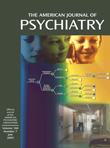Pathological gambling was first classified as a disorder of impulse control in DSM-III. Physiological dependence was emphasized in the operationalization of pathological gambling in DSM-III-R in 1987. Ten diagnostic criteria for pathological gambling were provided in DSM-IV in 1994. Three dimensions were identified, namely, loss of control, dependence, and damage to areas of one’s life. The cutoff for pathological gambling was meeting five criteria. Individuals meeting three or four criteria were classified as problem gamblers and potential pathological gamblers. The data gathered in this study and the findings presented here were based on DSM-IV criteria.
This article reports the results of a survey on the current prevalence of problem and pathological gambling in the general population of Hong Kong. The findings show that a considerable proportion of the region’s population has problems with gambling and that high-risk groups can be identified. The survey results have implications for prevention and treatment services.
Method
Respondents were interviewed with a computer-assisted survey team, a survey research group with expertise in telephone interviews. Respondents were recruited with random-digit dialing and random selection of respondents within households. Interviews were conducted between 6:00 p.m. and 10:00 p.m. during May 9–19, 2001. Respondents’ informed consent was obtained after the procedures had been fully explained. Each number was called up to six times before the subject was dropped from the study. The response rate was 57.4%, which is comparable to response rates in telephone surveys on other topics in Hong Kong. There were no apparent differences between the respondents and the nonrespondents as far as socioeconomic characteristics are concerned. The statistical error associated with the overall sample ranged from 2.2% to –2.2% (95% confidence interval [CI]).
The DSM-IV Gambling-Behavior Index was modified and translated into Chinese. Our deviation from the original index was that two questions related to the ninth criterion were used to gather data on damage to relationships and study or work, respectively. Total scores ranged from 0 to 10.
The cutoff for problem and pathological gambling was a score of 3 or 4 and a score of 5, respectively. A short questionnaire was included to explore the respondents’ socioeconomic status (e.g., sex, age, education, and family income).
One-half (50.1%) of the 2,004 respondents (N=1,004) were women, and 49.9% (N=1,000) were men; 9.5% (N=190) were adolescents ages 15–17, and 83.5% (N=1,673) were adults ages 18–55. Another 7.0% (N=140) were ages 56–64. The survey sample was comparable (through t test analyses) to 2001 census figures
(1) for gender and age.
Results
Eighty-one of the respondents (4.0% of the sample) scored 3 or 4 on the Chinese DSM-IV Gambling-Behavior Index and were classified as problem gamblers. Thirty-seven of the respondents (1.8% of the sample) scored 5 or higher on the same index and were classified as pathological gamblers. On the basis of these results, it was estimated that 158,221 to 242,353 Hong Kong residents ages 15–64 years can be classified as problem gamblers, and another considerable proportion of the population, i.e., 65,171 to 116,523 residents, can be categorized as probable pathological gamblers.
In order to assess significant differences between respondents without gambling problems and those with moderate to serious gambling problems, the responses of the problem and pathological gamblers were combined, and chi-square analyses were performed. Significant differences between the two samples were found in sex and education. Only about one-half (49.9%, N=1,000) of the total sample were men, but 80.5% (N=95) of the problem and pathological gamblers were men (χ2=46.9, df=1, p<0.001). Only 33.3% (N=667) of the survey sample had received an education of no more than 9 years, but 43.2% (N=51) of the problem and pathological gamblers had attained an education of 9 years or fewer (χ2=14.2, df=2, p<0.001).
Logistic regression analyses (stepwise method) were used to assess the relative impact of socioeconomic variables and forms of gambling on problem and pathological gambling. In regression equations, problem and pathological gambling were computed as the criterion variable, and sex, age, education, monthly family income, and forms of gambling were used as predictor variables. All of the predictor variables yielded a model explaining 80.5% of the variance in problem and pathological gambling. Significant predictors of problem and pathological gambling were sex (odds ratio=2.26, 95% CI=1.12–4.57), an education level of 9 years or fewer (odds ratio=5.03, 95% CI=1.78–14.23), a monthly family income of $10,000 (Hong Kong) to $24,999 (Hong Kong) (odds ratio=2.83, 95% CI=1.01–7.95), and betting on horse racing (odds ratio=0.27, 95% CI=0.13–0.55), soccer games (odds ratio=0.33, 95% CI=0.14–0.80), and casino games (odds ratio=0.43, 95% CI=0.24–0.76).
Discussion
This study is the first systematic region-wide survey of the current prevalence of problem and pathological gambling in the general population of Hong Kong, to our knowledge. Previous gambling research was scarce and limited in scale
(2). Since there is a paucity of data on the prevalence of excessive gambling and gambling-related problems in Hong Kong, governmental efforts in formulating a clear gambling policy and developing services have been seriously hindered. Currently, government-funded or government-subsidized services for the excessive gamblers and their families are unavailable.
Our survey results showed that a substantial proportion of the general population are problem or pathological gamblers, among whom men predominate. It seems that male gamblers with an education of no more than 9 years with a monthly family income in the middle range are most vulnerable to problem and pathological gambling when they participate in betting on horse racing, soccer games, and casino games. It will be necessary to develop services tailor-made for excessive gamblers and their families. Also, outreach services should be designed for high-risk groups.
In brief, we suggest a broad range of services at the remedial and preventive levels. These include help lines, clinical assessment of gambling behavior, family-based counseling, self-help and support groups, community-based education programs, and media campaigns warning the public against excessive gambling. Finally, the government is advised to set up a committee for gambling affairs to propose gambling policy and to support research, education, and prevention and treatment services.

